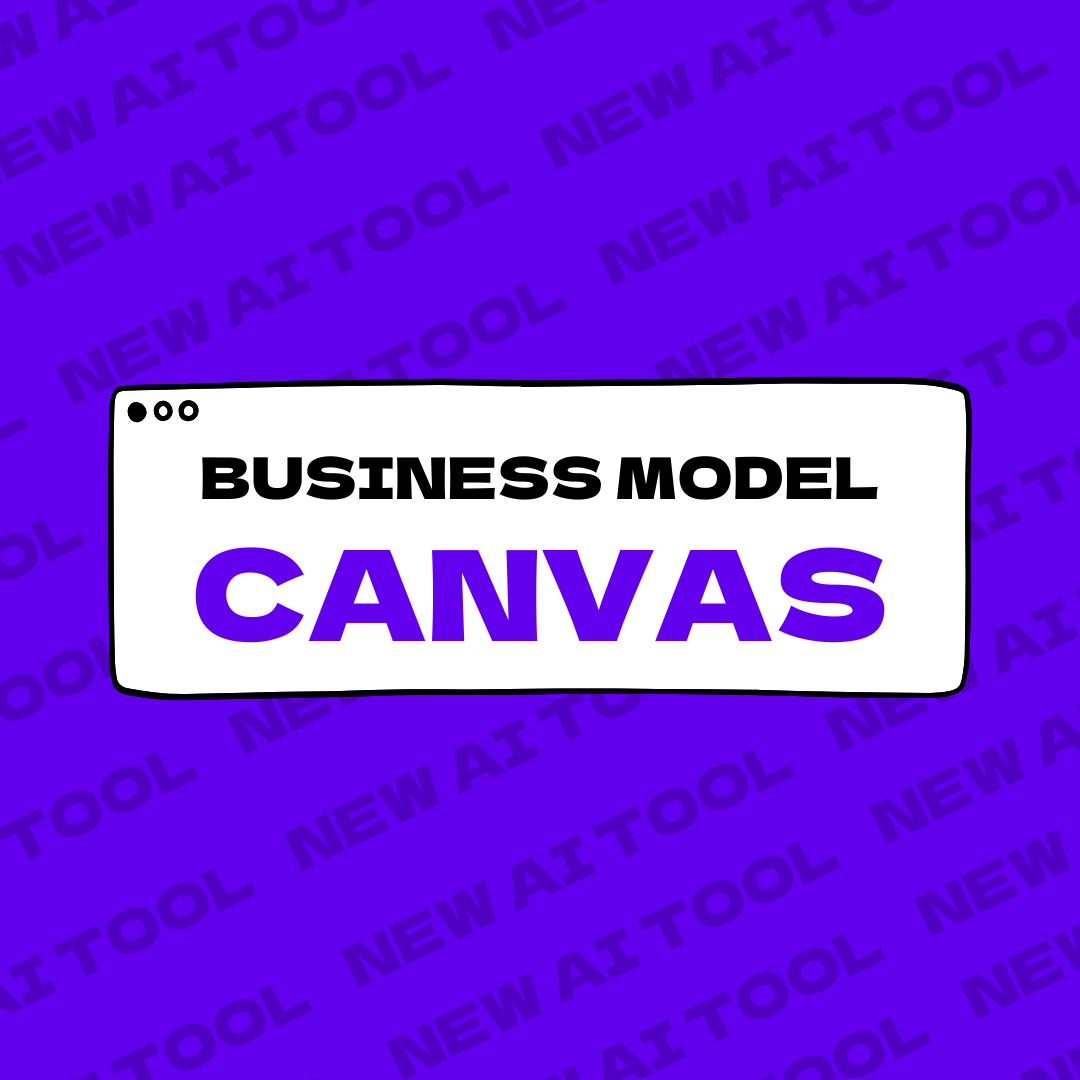Top 10 Limitations of Business Model Canvas in 2025: Best Insights for Startups
The Business Model Canvas (BMC) is a widely adopted tool for outlining and refining a business strategy. However, despite its popularity, it has some inherent limitations that can significantly impact its effectiveness, particularly for startups navigating complex business environments. In this article, we explore the top 10 limitations of Business Model Canvas, providing detailed insights and practical advice for entrepreneurs and startups.
Try our FREE AI Business Model Canvas generator to automatically create a BMC by answering just two questions. You will get an editable Google Presentation and an extensive guide on what to do next.
Why Understanding the Limitations of Business Model Canvas Matters
While the BMC offers a clear and concise visualization of a business model, startups and entrepreneurs must be aware of its limitations to avoid potential pitfalls. Recognizing these constraints can lead to better strategic decisions and more comprehensive business planning.
Top 10 Limitations of Business Model Canvas
1. Lack of Depth
The BMC is often criticized for its lack of depth, making it inadequate for early-stage startups that require more detailed strategic planning and operational insights.
2. Overly Simplistic for Complex Models
For businesses with intricate models, the BMC can be overly simplistic, failing to capture the nuances and complexities inherent in such operations. It tends to provide a superficial representation.
3. No Strategic Guidance
The BMC does not offer strategic guidance beyond visual representation. Entrepreneurs might struggle with translating the canvas into actionable strategies without additional tools or frameworks.
4. Insufficient Competitive Analysis
Competitive analysis is crucial for differentiation in crowded markets, yet the BMC lacks components for thoroughly analyzing competitors and industry dynamics.
5. Lacks Adaptability to Dynamic Environments
The business landscape is rapidly changing, but the BMC’s static nature doesn't accommodate quick pivots or adaptive strategies crucial in volatile markets.
6. Ignores Environmental and Societal Aspects
As businesses increasingly adopt sustainable practices, the BMC falls short in integrating environmental and societal considerations into its framework.
7. Fails to Support Iterative Process
Business model innovation is often an iterative process requiring continuous refinement and iteration. The BMC's static format does not support this ongoing evolution effectively.
8. Limited Financial Insight
Financial planning and forecasting are inadequately addressed in the BMC, which can be problematic for startups needing robust financial strategies and projections.
9. Lack of Actionable Steps
While the BMC maps out key elements of a business, it does not provide actionable steps for implementation, leaving entrepreneurs without clear guidance on the next steps.
10. Reliance on User Expertise
The effectiveness of the BMC relies heavily on the user’s expertise. Inexperienced entrepreneurs may struggle to fill out the canvas comprehensively without missing critical aspects.

Read more on the The Limits of The Business Model Canvas As a Dynamic Framework.
How to Overcome These Limitations: A Step-by-Step Guide
- Complement BMC with Other Tools: Utilize SWOT analysis, PESTEL analysis, and Porter's Five Forces to address competitive and strategic planning gaps.
- Iterate and Update Regularly: Make the BMC a dynamic document by updating it regularly to reflect changes in the business environment and your strategic pivots.
- Integrate Sustainability Models: Incorporate tools like the Triple Bottom Line framework to address environmental and societal factors.
- Link Financial Models: Use financial modeling tools alongside the BMC to create detailed financial strategies and forecasts.
- Collaborative Refinement: Involve your team and stakeholders in refining the BMC to ensure all perspectives and insights are captured.
- Leverage AI and Digital Tools: Utilize AI-driven tools that can provide predictive analytics, market insights, and automated suggestions to enhance your BMC.
Common Mistakes to Avoid
- Over-Reliance on BMC Alone: Don’t rely solely on the BMC. Use additional strategic tools and frameworks to gain a comprehensive business perspective.
- Neglecting Regular Updates: Avoid the pitfall of treating the BMC as a one-time task. Regularly revisit and revise your canvas to stay relevant.
- Ignoring Team Input: Lack of collaboration can lead to misaligned strategies. Make sure all team members contribute to the BMC.
Conclusion
Understanding the limitations of the Business Model Canvas is crucial for startups and entrepreneurs aiming to create robust and adaptable business strategies. By recognizing these constraints and integrating supplementary tools and practices, you can overcome these challenges and create a more comprehensive approach to business model innovation and growth.
For a more dynamic and simplified experience in creating your Business Model Canvas, try the Free F/MS AI Business Model Canvas Tool. This tool saves you time and enhances your strategic planning process, providing a personalized Business Model Canvas tailored to your needs.
Your roadmap to success is just two questions away!
FAQ
1. What are the limitations of the Business Model Canvas (BMC) for early-stage startups?
The BMC is often criticized for its lack of depth, making it inadequate for early-stage startups that require more detailed strategic planning and operational insights. Learn more about these limitations on LinkedIn
2. Why is the Business Model Canvas considered overly simplistic for complex businesses?
For businesses with intricate models, the BMC can be overly simplistic, failing to capture the nuances and complexities inherent in such operations. Visit Googlesir to explore this topic.
3. Does the Business Model Canvas offer strategic guidance?
No, the BMC does not offer strategic guidance beyond visual representation, making it challenging to translate into actionable strategies. Further insights are available on Googlesir.
4. How does the BMC handle competitive analysis?
The BMC lacks components for thoroughly analyzing competitors and industry dynamics, which is crucial for differentiation in crowded markets. This has been discussed in detail in a research paper.
5. Is the Business Model Canvas adaptable to dynamic business environments?
The BMC is static by nature, which doesn't accommodate quick pivots or adaptive strategies crucial in volatile markets. Learn more on LinkedIn.
6. Does the BMC integrate environmental and societal aspects?
The BMC falls short in integrating environmental and societal considerations into its framework, leading to gaps in sustainable business practices.
7. How does the static format of the BMC impact iterative processes?
The BMC’s static format does not support the iterative process of business model innovation effectively, which requires continuous refinement. Detailed discussions can be found on LinkedIn.
8. What financial aspects are inadequately addressed by the BMC?
Financial planning and forecasting are inadequately addressed in the BMC, which can be problematic for startups needing robust financial strategies.
9. Does the BMC provide actionable steps for implementation?
While the BMC maps out key elements of a business, it does not provide actionable steps for implementation, leaving entrepreneurs without clear guidance on the next steps.
10. How does user expertise affect the effectiveness of the BMC?
The effectiveness of the BMC relies heavily on the user’s expertise. Inexperienced entrepreneurs may struggle to fill out the canvas comprehensively without missing critical aspects.


